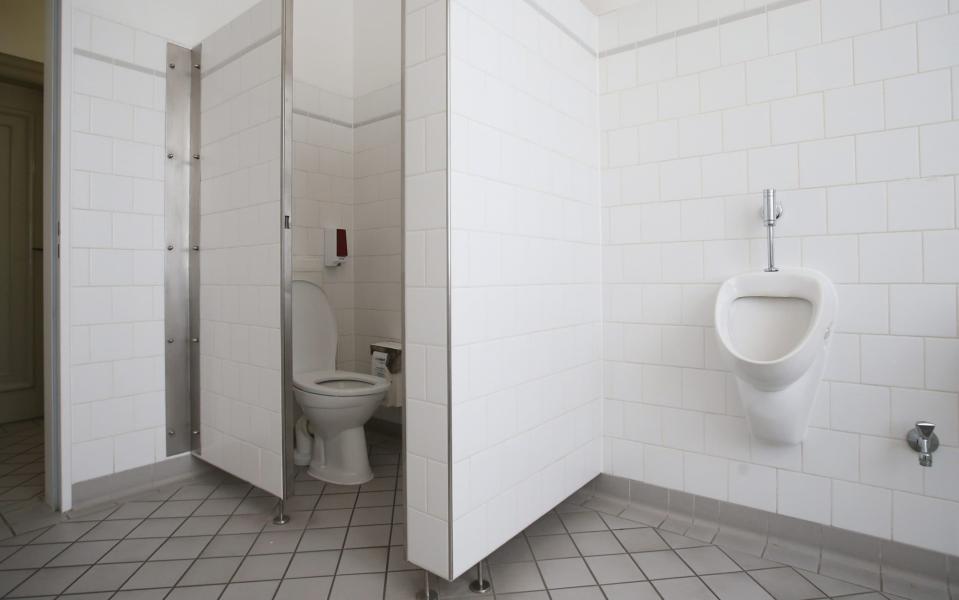Exclusive: Return of ladies and gents lavatories, as ministers tell architects all new buildings must have separate facilities

- Oops!Something went wrong.Please try again later.
Public buildings will have to have separate 'ladies' and 'gents' lavatories in the future in a blow for campaigners who want more gender-neutral facilities.
Robert Jenrick, the Communities secretary, is to amend building regulations and planning guidance to ensure separate 'ladies' and 'gents' facilities are installed in new buildings or those being developed, the Telegraph can disclose.
Buildings which already had unisex lavatories, which are shared by men and women, also face having to install partitions to ensure the privacy of the occupants is “fully respected”, sources said.
Mr Jenrick’s department launched a review last November to “ensure better provision of toilets for women and men”.
That came after an outcry over the way that companies and authorities had ripped out male and female lavatories and replaced them with gender neutral ones.
Watch: Girlfriend Collective Just Launched a Collection of Gender Neutral Loungewear That Everyone
Evidence has shown that women face increasing difficulties accessing single-sex lavatories because many have been converted into "gender neutral" ones.
The Home Office installed gender-neutral lavatories in 2018.
The BBC has gender-neutral lavatories in all of its buildings, in addition to lavatories for men and women. Channel 4 installed gender neutral facilities in 2017.
The changes will apply to new buildings or existing buildings, such as offices, shops and entertainment venues, as well as publicly funded buildings such as hospitals, undergoing major refurbishment when building regulation consent is required for the works.
Under the changes, the buildings will have to provide separate lavatories for women “given the particular health needs of women, and the fact that men's urinals can serve more customers at a quicker pace”, departmental sources said.
Buildings with so-called “unisex provision” will have to offer men and women entirely self-contained cubicles, with basins inside, to protect the privacy of occupants.

A source close to Mr Jenrick said: “It’s a necessity for women to have access to their own provision of toilets, but too often separate sex toilets are being removed by stealth - causing great distress.
“We’ve listened to the concerns raised by women and the elderly about their security, dignity and safety and are going to maintain and improve safeguards by updating regulations in order to ensure that there is always the necessary provision of separate toilets for everyone in the community.
“These changes will help to maintain safeguards that protect women and the proper provision of separate toilets, which has long been a regulatory requirement, will be retained and improved.
“We recognise that there needs to be a public service provision for everyone in our community, and want to help to deliver on that objective.”
Mr Jenrick’s “technical review” looked at the ratio of female lavatories needed against those for men given “the obvious need for women to always use cubicles”, according to a source.
The Government’s response will “address misconceptions that removing sex-specific toilets are a requirement of equality legislation”, an insider said.
“The proposals will also bring building rules in line with existing statutory requirements for mixed sex toilet provision in schools,” he added.
The Old Vic Theatre in central London was criticised in 2019 when it converted all of its male and female lavatories to gender-neutral toilets.
One user complained after the refurbishment: “Patrons are, in theory, free to self-select from blocks labelled stalls-only and blocks containing urinals. The problem is obvious: women cannot use urinals.”
In February last year a Tory peer warned that gender-neutral lavatories made women feel uncomfortable and should be replaced with single-sex facilities.
Lord Lucas told a House of Lords debate that half of all lavatories and changing rooms in public buildings should be for women only.
Lord Lucas said: "Some institutions have converted their ladies and gents communal toilet facilities to gender-neutral. Others have converted changing rooms similarly.
“Is this desirable or justified? What research as to people's needs is it based on? Has anyone – and women in particular – been consulted?
"Who does this change disadvantage? Women who do not, for reasons of discomfort or religion, wish to find themselves in an enclosed, unobserved space with men.”
Watch: Hasbro Announces Mr. Potato Head Will Now Be Gender Neutral

